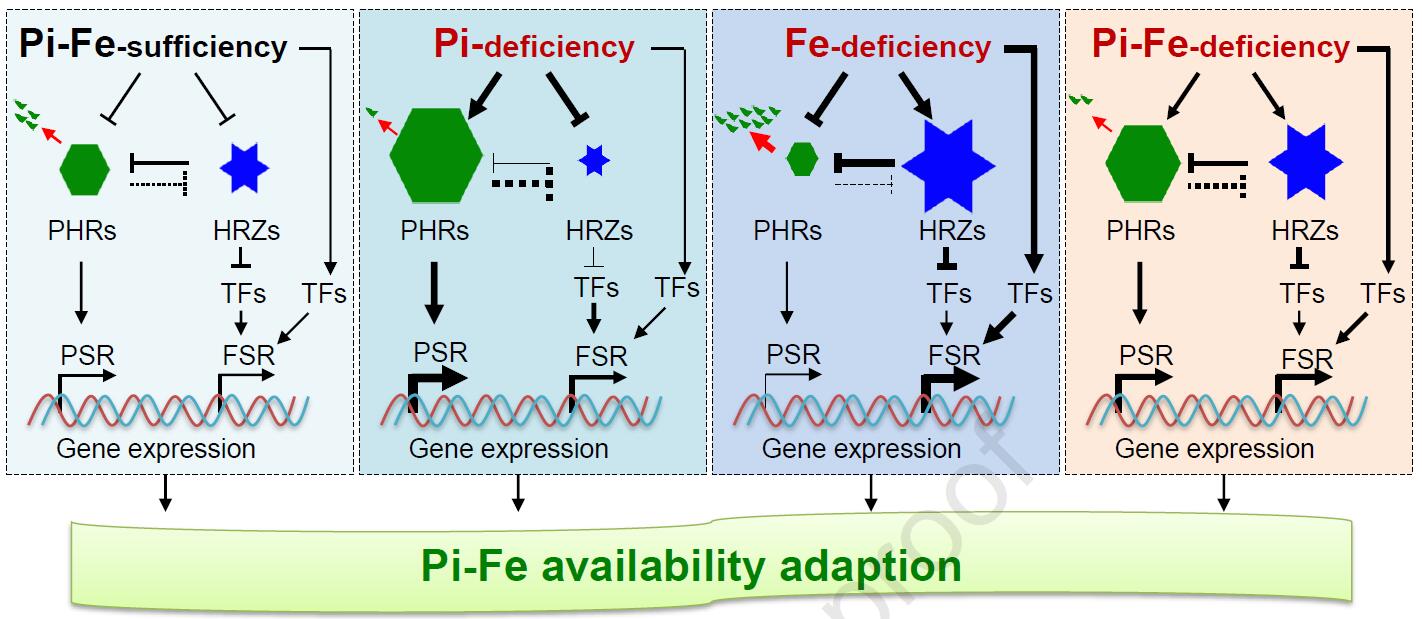A reciprocal inhibitory interplay between phosphate and iron signaling in rice
Topic - Crosstalk between phosphate and iron signaling
Summary
Phosphorous (P) and iron (Fe) are two essential nutrients for plant growth and development and are highly abundant elements in the earth’s crust but often display low availability to plants. Due to the ability to form insoluble complexes, the antagonistic interaction between P and Fe nutrition in plants has been noticed for decades. However, the underlying molecular mechanism modulating the signaling and homeostasis between them is still obscure. Here, we show that the possible iron sensors HRZs, iron deficiency induced E3 ligases, could interact with the central regulator for phosphate (Pi) signaling, PHR2, and prompt its ubiquitination at lysine residues K319 and K328, leading to its degradation in rice. Consistent with it, the hrzs mutants displayed a high Pi accumulation phenotype. We further demonstrated that iron deficiency could attenuate Pi starvation signaling by inducing the expression of HRZs, which in turn could trigger PHR2 protein degradation. We also found that PHRs could negatively regulate HRZs transcription to modulate iron deficiency responses. Therefore, PHR2 and HRZs form a reciprocal inhibition module to coordinate Pi and iron signaling and homeostasis in rice. Thus, our results uncover a molecular link between Pi and iron master regulators that enable adaptation to Pi and iron availability in plants.
Link: https://www.sciencedirect.com/science/article/pii/S1674205221003713
Wechat promotion (In Chinese)
